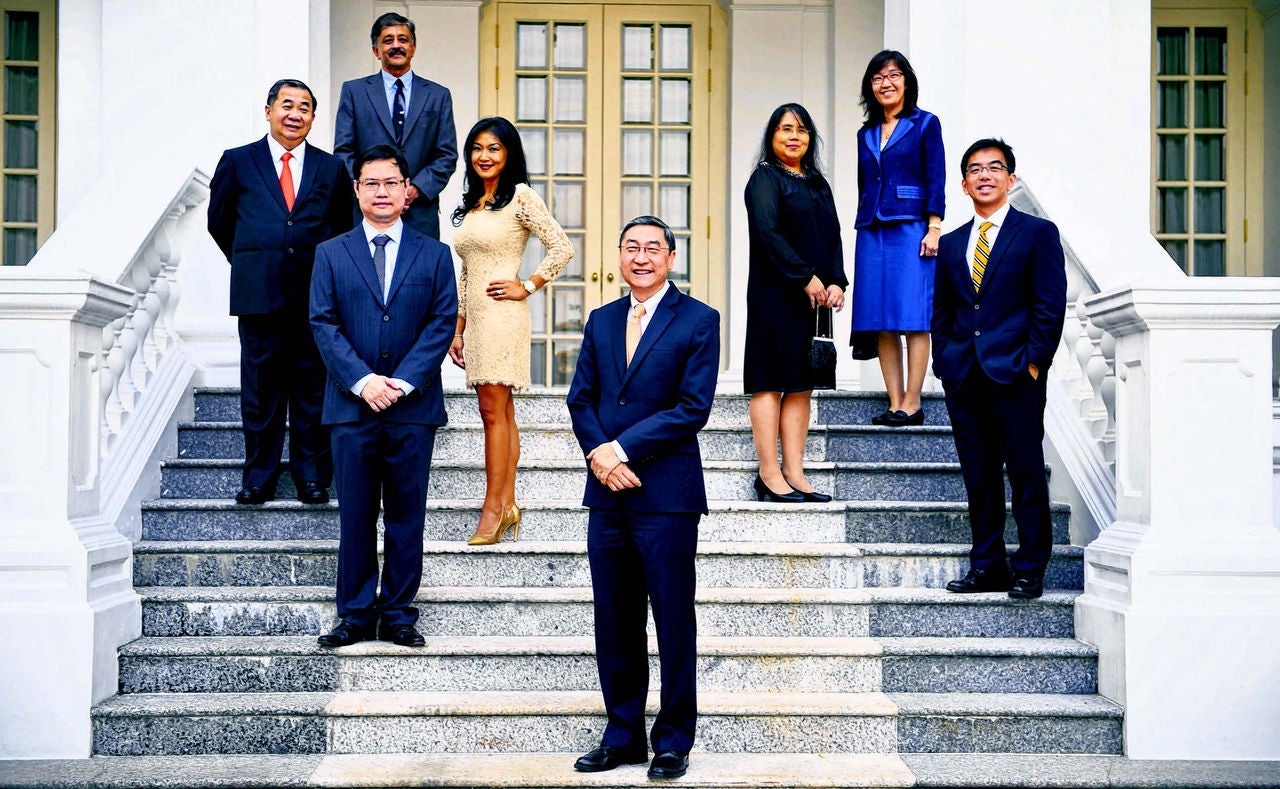
and two teams, which comprised (from left) Professor Freddy Boey, Professor Subbu Venkatraman, Associate Professor Tina Wang, as well as Professor Wynne Hsu, Professor Lee Mong Li and Professor Wong Tien Yin. ST PHOTO: MARK CHEONG
Prof among scientists, engineers to receive awards from President Tan
More than a decade ago, Professor John Eu-Li Wong first noticed the “same cancer behaving differently” in Asians and Caucasians while he was studying abroad.
Prof Wong – who last night won a top science award – observed that lung cancer in the United States, for example, was largely a “disease of smokers”, with men forming the bulk of its patients. In Singapore, however, a very large number of lung cancer patients were women in their 40s who had never smoked before.
This intrigued Prof Wong, now chief executive of National University Health System, and led him to set up the Cancer Therapeutics Research Group in 1997. “For the last 150 years, we have been importing treatment solutions from the West. What happens if the cancers are different in America and Asia?” said Prof Wong, who co-founded the group.
The group has shown major differences in the expression and treatment of common cancers between Asian and Caucasian populations.
It also brings together academic cancer centres from Singapore, Australia and across Asia to develop better treatments for cancers affecting mainly Asian populations.
For these and other efforts, the oncologist-haematologist was one of eight research scientists and engineers awarded the President’s Science and Technology Awards (PSTA) by President Tony Tan Keng Yam at a ceremony held in the Istana yesterday.
“I’m just doing my job... It’s a huge team effort,” said Prof Wong, who was awarded the President’s Science and Technology Medal – the most prestigious award under the PSTA.
Professor Subbu Venkatraman and his team at Nanyang Technological University (NTU) and the Singapore Eye Research Institute (SERI) received the President’s Technology Award for developing an anti-glaucoma drug that can be injected into the eye surface. The sustained-release nanomedicine treatment lasts up to six months and is more effective than eye drops, which patients may forget to apply.
“Conventionally, nanomedicine has been aimed mainly at cancer chemotherapy. Demonstrating its utility for treating glaucoma is a huge breakthrough that will also open other doors,” said Prof Venkatraman, chair of NTU’s School of Materials Science and Engineering.
The technology’s development was largely funded by SERI through a Translational Clinical Research Grant from the National Research Foundation.
Professor Wong Tien Yin of SERI and his National University of Singapore (NUS) team won the President’s Technology Award for ocular imaging technology used for screening and tracking the progression of diseases such as glaucoma and stroke.
The President’s Science Award went to NUS’ Professor Loh Kian Ping for research on graphene chemistry.
Three scientists under the age of 35 received the Young Scientist Award: Yale-NUS’ Assistant Professor Melissa Jane Fullwood, and NTU’s Assistant Professor Wang Qijie and Assistant Professor Zhang Baile.
Prof Zhang, 33, designed an “invisibility cloak” that can make objects and even small animals disappear. He is working to make the cloak omni-directional and to create cloaks for different energy forms like light and heat.
A “world-class talent base” is needed for R&D to flourish, Minister in the Prime Minister’s Office S. Iswaran said at yesterday’s event. “The depth of Singapore’s research talent base has been the key to our ability to tap science, technology and innovation in growing our economy,” said Mr Iswaran, who is also Second Minister for Home Affairs and Trade & Industry.
Contributed by

English
The Straits Times - 05 Nov 2014 - SNEC doctors honoured at President’s Science and Technology Awards 2014 (3).pdf

Chinese
Lianhe Zaobao - SNEC doctors honoured at President’s Science and Technology Awards 2014 (1).pdf














 Get it on Google Play
Get it on Google Play